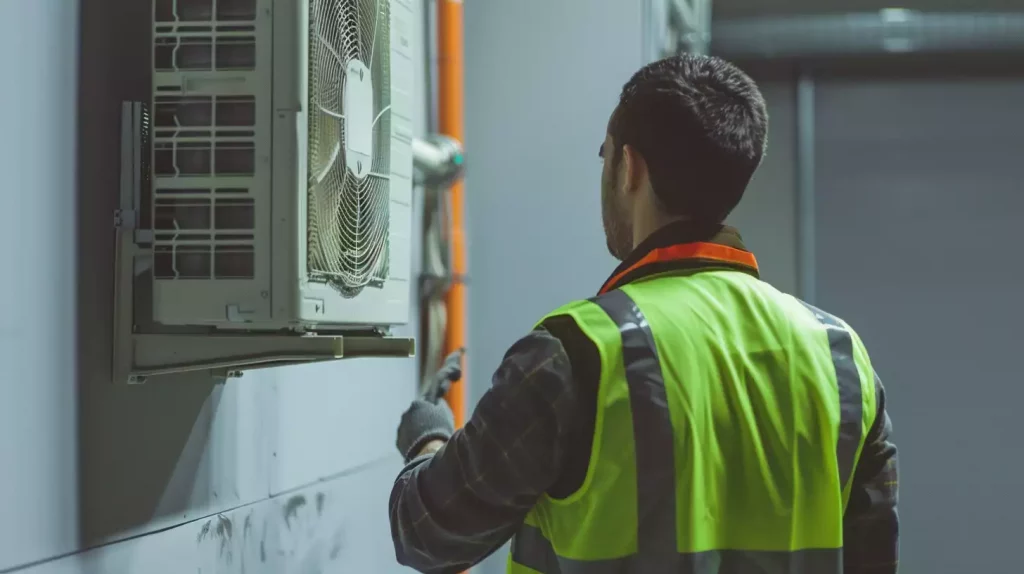Level 3 vs Level 4 TM44 Inspections — What’s the Difference?
Choosing the right level of TM44 inspection is essential to ensure compliance and get meaningful insights from your assessment.
In this article, we’ll explain the difference between Level 3 and Level 4 inspections, when each is required, and how that impacts cost, complexity, and the value you’ll receive.

What Are Level 3 and Level 4 Inspections?
Level 3 inspections are tailored to simpler systems — for example, split systems, VRF (Variable Refrigerant Flow) units, or other packaged cooling systems without centralised plant.
Level 4 inspections are for complex systems involving centralised plant like air handling units (AHUs), central chillers, and multiple terminal units — systems that are more integrated and have multiple control zones.
When Is Each Level Required?
| Type of System | Typical Scenario | Which Level |
|---|---|---|
| Split units, VRF systems, packaged cooling systems | Multiple small units in individual rooms or offices | Level 3 |
| Systems with central chillers, AHUs, ducted air distribution, multiple zones | Large office blocks, shopping centres, multi-zone commercial buildings | Level 4 |
Key Differences: Scope, Sampling & Complexity
1. Scope & Components Inspected
Level 3 will focus on the major units and typical controls associated with those units (compressors, indoor units, filters, basic controls)
Level 4 must inspect central plant, ductwork, control systems across zones, mixing boxes, and sometimes partial sampling of terminal units and AHUs.
2. Sampling Requirements
Because inspecting every single component in a large system is impractical, Level 4 often uses sampling (e.g. a percentage of AHUs or terminal units) to conclude the system.
3. Time, Effort & Cost
Level 4 inspections take longer, require more data collection, more complex analysis, and larger reports — so the cost is higher.
4. Report Complexity & Recommendations
Because Level 4 systems are more integrated, the recommendations may include advanced control strategies, zone scheduling, optimization between plant and terminal systems — not just “fix this filter / loosen this setting.”
Why It Matters to You
Compliance Risk: Using the incorrect level may lead to an invalid report or enforcement action.
Cost Efficiency: You don’t want to overpay by doing a Level 4 when Level 3 is appropriate — but underestimating complexity can lead to missing crucial issues.
Actionable Recommendations: A properly scoped inspection delivers insights that match the complexity of your system — so the advice is realistic and relevant.
How to Know Which Level You Need
Review your system design — Are you running central chillers / AHUs / duct networks?
Check ventilation & zoning — Are there multiple zones served by a central plant?
Consult a knowledgeable assessor — A qualified inspector can make the final determination based on your system and site conditions.
Next Steps & What to Do Now
Gather your system documentation — model, capacity, layout, control drawings
Contact an accredited assessor and describe your system — ask whether it likely fits Level 3 or 4
Be prepared to provide access and system history so the assessor can scope the inspection properly
How can we help you?
From TM44 compliance to identifying potential energy savings, we provide expert support to keep your air-conditioning system efficient and fully compliant.
Email address
tm44@airinspections.co.uk
General enquiries
01335 342445
Headquarters
Optimair Limited, 19 St Christopher's Way, Pride Park, Derby, DE24 8JY